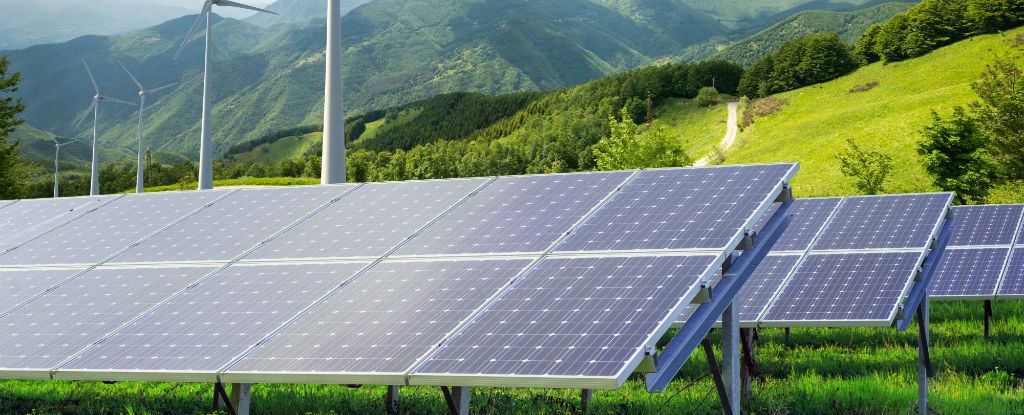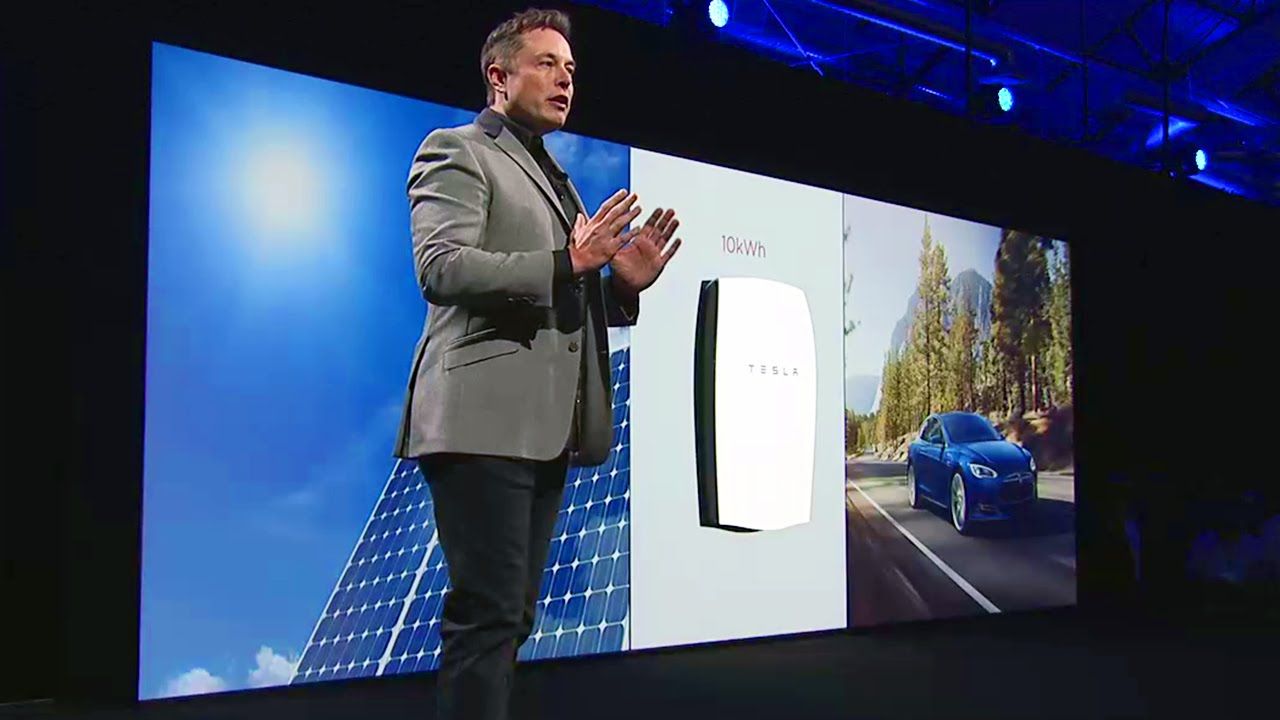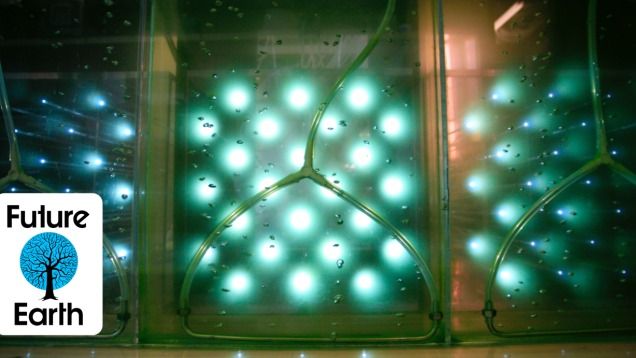“[H]alf the people in the world cram into just 1 percent of the Earth’s surface (in yellow), and the other half sprawl across the remaining 99 percent (in black).”


“[H]alf the people in the world cram into just 1 percent of the Earth’s surface (in yellow), and the other half sprawl across the remaining 99 percent (in black).”

Imagine if your clothing could, on demand, release just enough heat to keep you warm and cozy, allowing you to dial back on your thermostat settings and stay comfortable in a cooler room. Or, picture a car windshield that stores the sun’s energy and then releases it as a burst of heat to melt away a layer of ice.
According to a team of researchers at MIT, both scenarios may be possible before long, thanks to a new material that can store solar energy during the day and release it later as heat, whenever it’s needed. This transparent polymer film could be applied to many different surfaces, such as window glass or clothing.
Although the sun is a virtually inexhaustible source of energy, it’s only available about half the time we need it—during daylight. For the sun to become a major power provider for human needs, there has to be an efficient way to save it up for use during nighttime and stormy days. Most such efforts have focused on storing and recovering solar energy in the form of electricity, but the new finding could provide a highly efficient method for storing the sun’s energy through a chemical reaction and releasing it later as heat.

The combination of human and computer intelligence might be just what we need to solve the “wicked” problems of the world, such as climate change and geopolitical conflict, say researchers from the Human Computation Institute (HCI) and Cornell University.
In an article published in the journal Science, the authors present a new vision of human computation (the science of crowd-powered systems), which pushes beyond traditional limits, and takes on hard problems that until recently have remained out of reach.
Humans surpass machines at many things, ranging from simple pattern recognition to creative abstraction. With the help of computers, these cognitive abilities can be effectively combined into multidimensional collaborative networks that achieve what traditional problem-solving cannot.

Governments, businesses, and economists have all been caught off guard by the geopolitical shifts that happened with the crash of oil prices and the slowdown of China’s economy. Most believe that the price of oil will recover and that China will continue its rise. They are mistaken. Instead of worrying about the rise of China, we need to fear its fall; and while oil prices may oscillate over the next four or five years, the fossil-fuel industry is headed the way of the dinosaur. The global balance of power will shift as a result.
LED light bulbs, improved heating and cooling systems, and software systems in automobiles have gradually been increasing fuel efficiency over the past decades. But the big shock to the energy industry came with fracking, a new set of techniques and technologies for extracting more hydrocarbons from the ground. Though there are concerns about environmental damage, these increased the outputs of oil and gas, caused the usurpation of old-line coal-fired power plants, and dramatically reduced America’s dependence on foreign oil.
The next shock will come from clean energy. Solar and wind are now advancing on exponential curves. Every two years, for example, solar installation rates are doubling, and photovoltaic-module costs are falling by about 20 percent. Even without the subsidies that governments are phasing out, present costs of solar installations will, by 2022, halve, reducing returns on investments in homes, nationwide, to less than four years. By 2030, solar power will be able to provide 100 percent of today’s energy needs; by 2035, it will seem almost free — just as cell-phone calls are today.

Catching sunlight at every angle.
One of the limitations of current solar panel technology is the panels need to be facing in a certain direction to make the most of the Sun’s rays, otherwise the amount of energy they can absorb drops off dramatically. A newly invented material could make the direction of solar panels much less of a concern in the future.
The material has been produced by electrical engineers at the King Abdullah University of Science & Technology (KAUST) in Saudi Arabia and Taiwan’s National Central University. Not only does the glass coating they’ve come up with soak up sunlight from multiple angles more effectively, it’s also able to keep itself clean — the newly treated panels were able to maintain 98.8 percent of their efficiency after six weeks outdoors.
For several years now experts have debated whether solar panels are more productive when facing south or west, with the majority concluding that it really depends on where in the world you live. If the new coating can be produced on a mass scale, not only will panels become more efficient, they can also be placed in all kinds of positions to catch the sunlight.

In the third century BCE, King Hiero II of Syracuse asked Archimedes to devise a number of death traps to thwart Roman invaders. Among the many designs the great inventor drew up was a solar death ray. The basic idea was to build an array of mirrors that could reflect rays of light into a central blast, causing Roman ships to burst into flame. It’s unlikely the weapon ever made it past the blueprint stage, but it became an incredibly influential model nonetheless. Archimedes was perhaps the first solar power convert, searching for a way to take advantage of the inconceivable amount of energy our friendly neighborhood star barfs up every second.
The only thing that would make Archimedes’ solar death ray more fascinating is if it was technically feasible, socially benevolent, and in space. That’s where John Mankins comes in. A NASA veteran, aerospace entrepreneur, and space-based solar power (SBSP) expert, Mankins designed the world’s first practical orbital solar plant. It’s called the Solar Power Satellite via Arbitrarily Large PHased Array, or SPS-ALPHA for short. If all goes to plan, it could be launched as early as 2025, which is sooner than it sounds when it comes to space-based solar power timelines.
Scientists have been aware of the edge the “space-down” approach holds over terrestrial panels for decades. An orbiting plant would be unaffected by weather, atmospheric filtering of light, and the sun’s inconvenient habit of setting every evening. SBSP also has the potential to dramatically increase the availability of renewable energy.

Musk opens up about autonomous vehicles, self-driving car rules, and the competition.
In Elon Musk’s world, “easy” is used to describe problems many might consider impossible—or at least very difficult to solve. Producing a fully autonomous vehicle that can operate in any condition and on any road, for example, is easy-ish. And Tesla Motors TSLA 0.91%, the all-electric automaker that Musk heads, is two years away from achieving it.
“I think we have all the pieces, and it’s just about refining those pieces, putting them in place, and making sure they work across a huge number of environments—and then we’re done,” Musk told Fortune with assuredness during his commute to SpaceX headquarters in Hawthorne, Calif., where he is also CEO. “It’s a much easier problem than people think it is. But it’s not like George Hotz, a one-guy-and-three-months problem. You know, it’s more like, thousands of people for two years.”

From Haiti to Alabama – discover the Solar Frontiers where clean energy is sparking a revolution in how our planet is powered – and by whom.

https://www.youtube.com/watch?v=yKORsrlN-2k
Tesla Powerwall Keynote by Elon Musk “The Missing Piece”
English and Spanish subtitles added, credit to Luis Gámez for transcribing and translating.

I recall when Venter made the first synthetic unique life form he said biofuels and algae that soaks up carbon dioxide would come out of it. Feels like it has been slow going but here is a why and why no item and please read the comments too as they are also informative.
From powering airplanes to replacing nuclear energy, algae has been touted as a green energy miracle. So if our waterways are already filled with the stuff, why isn’t it filling the world’s skies with biofueled planes? Algae is a tricky creature that presents a lot of challenges and misconceptions. Here’s why it’s difficult to harness—and why it could big a big payoff.
As we previously reported, algae is a fuel source that’s vastly more eco-friendly than oil, and will be crucial as we head into a future filled with climate change and depleting fossil fuels.
In 2013, a paper published in the journal Bioresource Technology reported that algal fuels can cut carbon dioxide emissions by 50 to 70 percent. It’s also more efficient than other biofuels, like those derived from corn. The US Department of Energy says that algae could produce up to 60 times more fuel per acre than land-based plants.